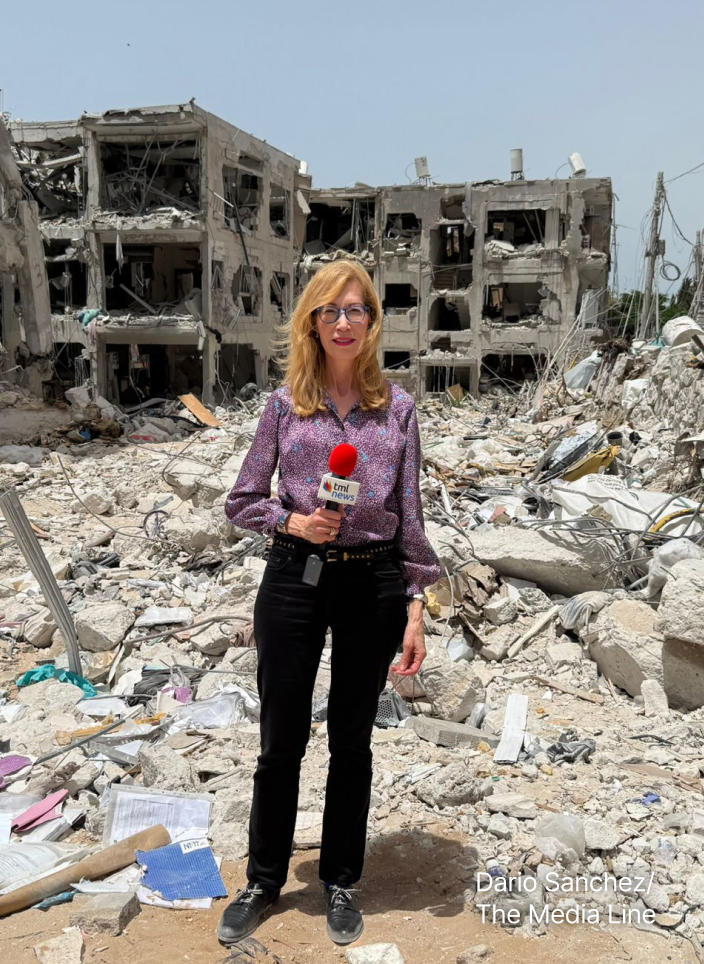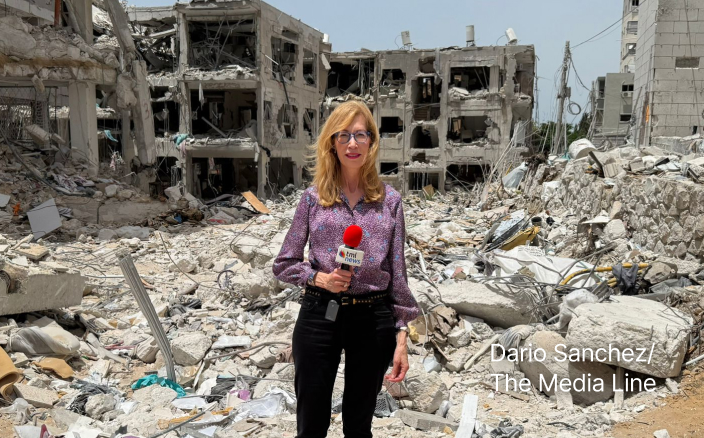The United States has entered the escalating Israel-Iran conflict with a direct military strike on Iran’s nuclear infrastructure, President Donald Trump announced Saturday night. The operation targeted three key sites: Fordo, Natanz, and Isfahan, marking the first time since the 1979 Iranian Revolution that US forces have bombed major facilities inside Iran.
“We have completed our very successful attack on the three Nuclear sites in Iran, including Fordow, Natanz, and Esfahan,” Trump wrote on Truth Social. “All planes are now outside of Iran air space. A full payload of BOMBS was dropped on the primary site, Fordow. All planes are safely on their way home. Congratulations to our great American Warriors. There is not another military in the World that could have done this. NOW IS THE TIME FOR PEACE!”
The strikes were carried out by B-2 stealth bombers using 30,000-pound bunker-buster bombs designed to penetrate fortified underground targets. A senior US defense official confirmed on background that multiple bombers departed from Whiteman Air Force Base in Missouri and likely staged at a forward base in Guam before entering Iranian airspace. The use of GBU-57A/B Massive Ordnance Penetrators was intended to disable Iran’s most protected nuclear facility, Fordo, which is buried deep within a mountain.
Natanz, previously targeted by Israel in a cyberattack over a decade ago and again with conventional weapons days earlier, is home to many of Iran’s uranium centrifuges. The site near Isfahan is believed to store near-weapons-grade uranium, raising international concerns in recent weeks. The International Atomic Energy Agency had confirmed the presence of highly enriched uranium at the site during an inspection just two weeks before the strike.
The American strike followed nine days of escalating conflict between Israel and Iran. Israel launched a surprise wave of airstrikes on Iranian military infrastructure and nuclear facilities, prompting missile salvos and drone attacks in retaliation. Israeli Prime Minister Benjamin Netanyahu justified the offensive as a move to prevent a nuclear “holocaust.” The initial Israeli strikes targeted Iranian bases, storage facilities, and command centers, reportedly killing several senior officers of the Islamic Revolutionary Guard Corps (IRGC).
President Trump’s decision followed intense deliberations within the White House, which included a national security meeting Saturday evening. The president cut short his participation in the G7 summit in Alberta, Canada, earlier in the week to return to Washington. The White House notified Israel in advance of the US action, according to Israeli officials. While earlier statements from Secretary of State Marco Rubio had emphasized a limited US role focused on protecting American troops, the president’s rhetoric shifted significantly in the days leading up to the strike.
Just days before the strike, President Trump publicly threatened Iran’s Supreme Leader Ayatollah Ali Khamenei, saying, “We know exactly where he is,” and calling him an “easy target.” The president insisted the US was not aiming to kill Khamenei “at least for now,” but warned that American patience was “growing thin.” The shift in tone reflected growing frustration within the administration over Iran’s refusal to enter negotiations.
The strike also followed the collapse of a last-ditch diplomatic effort. Turkish President Recep Tayyip Erdoğan had offered to broker a backchannel meeting in Istanbul between US and Iranian officials. President Trump reportedly considered attending in person or sending Vice President Vance and senior advisor Steve Witkoff. However, the talks fell through when Khamenei could not be reached to approve Iran’s participation.
Give the gift of hope
We practice what we preach:
accurate, fearless journalism. But we can't do it alone.
- On the ground in Gaza, Syria, Israel, Egypt, Pakistan, and more
- Our program trained more than 100 journalists
- Calling out fake news and reporting real facts
- On the ground in Gaza, Syria, Israel, Egypt, Pakistan, and more
- Our program trained more than 100 journalists
- Calling out fake news and reporting real facts
Join us.
Support The Media Line. Save democracy.
Iran has responded by activating its air defenses across multiple cities and warning of further retaliation. Iranian President Masoud Pezeshkian stated the country would not roll back its nuclear activity “under any circumstances,” but said Tehran was open to negotiations if Israeli attacks ceased. During a call with French President Emmanuel Macron, Pezeshkian reaffirmed Iran’s right to defend itself, accusing Israel and the United States of regional destabilization.
At a meeting of the Organization of Islamic Cooperation in Istanbul, Iranian Foreign Minister Abbas Araghchi accused the West of ignoring Israeli aggression. “There is unprecedented outrage and a groundswell of solidarity in the Islamic world,” he said. Several OIC members, including Saudi Arabia and Egypt, denounced the attacks and warned that further escalation could lead to regional war.
In the hours following the US strikes, Israeli warplanes launched further attacks on Iranian targets in Bandar Abbas, Ahvaz, and central regions, hitting drone depots, missile launchers, and radar sites. The Israeli military also claimed to have destroyed three Iranian F-14 jets and killed senior Islamic Revolutionary Guard Corps commanders, including Mohammed Said Izadi and Behnam Shahriyari. Iran has not confirmed these deaths.
Bandar Abbas, a strategic port city near the Strait of Hormuz, is a critical node in global oil shipping. Its targeting underscores the expanding geographic scope of the conflict and raises concerns over maritime security. Iran reportedly activated its air defense systems there and in other cities as Israeli and US aircraft operated in the region.
The US State Department began evacuating American citizens from Israel and the West Bank. US Ambassador Mike Huckabee urged Americans to register for departure, warning that with airspace closures, “the challenges are great.” Evacuations may include cruise ships, charter flights, and government-operated aircraft. “If given an option to evacuate—TAKE IT,” Huckabee wrote on X.
The Pentagon has not confirmed whether additional strikes are planned. A Department of Defense spokesperson said the mission was “limited in scope” and designed to prevent Iran from acquiring a nuclear weapon. Yet military analysts warn that Iran could respond through regional proxies such as Hezbollah, the Houthis, or Shia militias in Iraq and Syria.
The Iranian-backed Houthi movement in Yemen issued a statement warning it would target US naval vessels in the Red Sea if Washington continued to support Israeli strikes. Houthi military spokesman Yahya Saree said, “In the event that the Americans become involved in the attack and aggression against Iran alongside the Israeli enemy, the armed forces will target their ships and warships in the Red Sea.”
Meanwhile, Israel’s military reported launching approximately 30 fighter jets toward the Ahvaz region in southwestern Iran. The strikes reportedly targeted missile launchers and radar systems. Ahvaz, located near Iran’s oil fields, is another strategically significant area that may also lie on potential US bomber flight paths.
The Fordo facility, one of the targets of Saturday’s strike, has long been a focal point of international concern. Hidden deep inside a mountain near the city of Qom, it is built to withstand conventional attacks and had been widely viewed as virtually untouchable without advanced munitions like the GBU-57. The site was first disclosed publicly in 2009, though intelligence agencies had tracked it earlier.
Natanz, the larger of Iran’s enrichment sites, has a long history as a nuclear flashpoint. It was the target of the Stuxnet cyberattack jointly conducted by the United States and Israel during the Obama administration, which damaged thousands of centrifuges. Israeli airstrikes last week reportedly disrupted the power supply to Natanz, but the US bombs were likely far more destructive, according to nuclear experts.
President Trump is expected to address the nation in a televised speech.
Senator Lindsey Graham commented on the operation, saying, “The attack on Iran’s nuclear facilities was definitely the right decision. The Islamic Republic deserved it.”
Democratic Senator John Fetterman offered rare bipartisan praise, stating, “I am grateful to Trump.”
The timing of the operation—announced via social media before official briefings—was widely viewed as a political gamble, particularly as the president faces pressure from both interventionist and isolationist wings of his base.
While President Trump’s political base has historically resisted foreign interventions, voices once calling for restraint have now urged that if force is used, it must remain limited. The administration has insisted the strike was designed to prevent war, not prolong it.
The strategic implications remain unclear. Experts caution that Iran may retaliate through regional proxies or escalate direct attacks on American personnel and assets. The strikes may have set Iran’s nuclear program back by years, depending on the extent of the damage. Yet analysts fear the action may also close the door on diplomacy for the foreseeable future.

